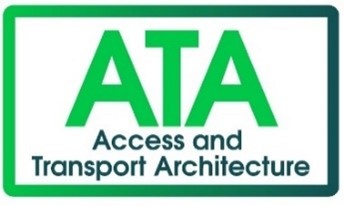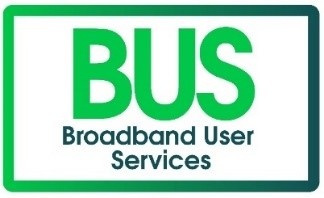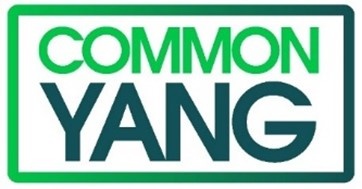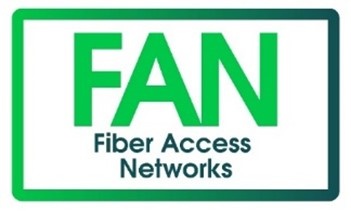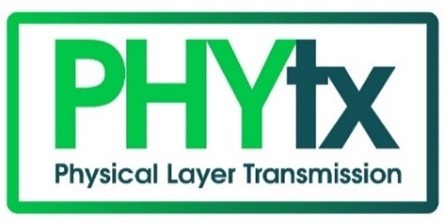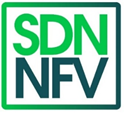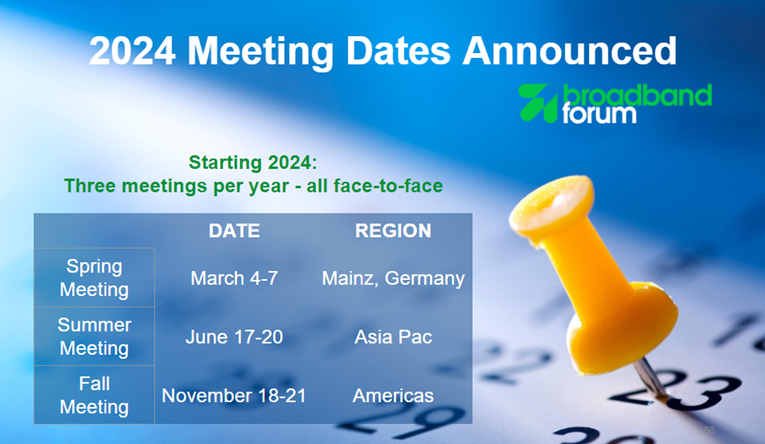____________________________________
Work Area Updates
For the full list of all Technical Reports published by Broadband Forum, click here. Please feel free to share this information with your colleagues so they are engaged with and aware of the developments of this work. For additional insight and to get involved, sign up for access to Broadband Forum tools and access your account using your company email address.
Key ATA documents near completion; Interim meeting penciled in for late 2024
Target: The Access & Transport Architecture Work Area maintains primary architectural work of the Broadband Forum. This work reflects the control, management and data plane aspects of the Broadband Forum’s defined and new architectures. These architectures are augmented to leverage new industry practices, while protecting the investment in broadband networks already deployed.
Outcomes:
- Performance, Experience, Application Testing Project Stream - WT-390.2A1 - Performance Measurement using Stamp in Access Networks - to Final Ballot.
- Access Architecture Project Stream - WT-459.i3 Multi-Service Disaggregated BNG with CUPS - to Straw Ballot.
- Access Architecture Project Stream - WT-459.2i2 Multi-Service Disaggregated BNG with CUPS: Integrated Carrier Grade NAT function. Reference Architecture, Deployment Models, Interface, and Protocol Specifications - to Straw Ballot.
- Non PS Assigned - Proposed NPIF- IPv6 Security for Broadband Network - now under revision.
Progress:
- Performance, Experience, Application Testing Project Stream - WT-452.7 Quality Attenuation Measurements Using L2 and L3 Active Protocols in Multicast Environments - in progress.
- Access Architecture Project Stream - WT-474 Subscriber Session Steering project continuing Architecture, YANG data modeling project (YMSSS) and Protobuf for the entities and relationships defined in the document. (via BitBucket and markdown) - in progress.
- Access Architecture Project Stream - WT-497 WiFi Authentication - Returned from SB#2 - starting comment resolution.
- Performance, Experience, Application Testing Project Stream - WT-452.3 Quality Attenuation Conformance Testing - in progress.
- Performance, Experience, Application Testing Project Stream - WT-452.4 QED Measurement Formats (via BitBucket and markdown) - in progress.
- Performance, Experience, Application Testing Project Stream - WT-452.6 - Applicability of IOAM in Supporting QED Measurement - in progress.
- Performance, Experience, Application Testing Project Stream - WT-471i4 IP Capacity Metrics and Measurement - in progress.
- Performance, Experience, Application Testing Project Stream - WT-499 Service Metrics contribution - in progress.
'ATA 101': We held an informative introduction session to give an overview of the Work Area for new and interested members.
New ideas: At the ATA Interim we continued our brainstorming which produced plenty of great ideas for potential new work items and activities. As we have highlighted previously, please keep it going! The list of ideas on the new idea wiki page and each idea will eventually be broken out into its own wiki page for further development. Please feel free to add any further ideas you may have to this page and reach out to the listed contact if you are interested in participating.
ATA Marketing: One key point raised during the brainstorm was the enthusiastic re-commitment to marketing of ATA work and potential work in the ATA and in the Forum. As we said repeatedly, we are doing great work – but if we don't tell anyone, it will just sit on a shelf and collect dust. Please reach out to marketing counterparts in your respective companies to generate contributions with proposals for campaigns.
Lastly, we agreed to hold an ATA interim meeting each year in late Q3 or Q4. Many have expressed their recognition of the critical nature of meeting in-person, in particular to work out difficult issues and formulate approaches to progress and establish new work. The interim meeting gives an additional opportunity to do this, as well as generally foster a productive team working environment. While we will continue to allow remote participation, we strongly encourage in-person attendance of active contributors to leverage these opportunities, especially at the quarterly meetings. Please plan for another ATA interim meeting in late 2024.
See the Closing Plenary slides for details in addition to the above highlights.
For more information on ATA Work Area’s ongoing work, visit: Access and Transport Architecture.
Progress towards full support for operator managed user services in the smart home
Target: Explore the necessary work for delivering an operator-grade smart home
Outcome: Work continues on USP 1.4, TR-181 Device:2.17 will be published in January, and the third issue of TR-398 Wi-Fi performance Test Plan nears completion.
Building on USP version 1.3 and TR-181 Device:2.16 – with both documents laying the foundations for application-enabled services using broadband CPE – the Broadband User Services (BUS) Work Area continues to focus on delivering an operator-grade smart home ecosystem.
Developed jointly with the WWC Work Area for updates to 5G interfaces and remote management, TR-181 Device:2.17 has moved to Final Ballot and will be published in January 2024. The Smart Home Project Stream continues discussions on Matter interfaces and modelling and how to structure it in Device:2.17 and IoT communication, setup, and management. As part of this, the group will work with fellow Standards Development Organization Wireless Broadband Association.
Momentum and interest grows for USP 1.4. During the meeting, the team continued their work on securing and authenticating USP services and delivering additional functionality.
The Smart Home Project Stream is designed to provide the tools to empower operators to assist in the deployment, management, and interoperability of the consumer smart home. This will be achieved by leveraging USP (TR-369)/TR-181, as well as introducing requirements and test plans for the network and security capabilities of the smart home devices deployed in subscriber networks. Contact the Project Stream Leads, Jason Walls and Tim Spets, to get involved. Join the smart-home slack channel and smarthome@broadbandforum.org mailing list.
The group is finalizing Wi-Fi performance benchmark metrics for the widely used TR-398 Wi-Fi performance Test Plan (WT-198i3). Once these proposed metrics for operator-grade Wi-Fi have been thoroughly tested and approved, the third issue of the specification will be published by the Spring 2024 Meeting. Issue 10 of TR-124 is also planned.
Two engaging brainstorm sessions were held on security and sustainability. These topics will be key areas of focus for future projects. Building on the great success of this year’s first flagship event, the USP Summit 2024 will take place in tandem with the Spring 2024 Meeting and BASe Technical Summit on March 7-8, 2024.
Take a look at the BUS Work Area’s latest work: https://wiki.broadband-forum.org/display/BBF/Broadband+User+Services.
TR-383 Amendment 7 approved for publication!
Target: Specify YANG modules that are applicable to multiple work areas, provide support to those same work areas for their specific YANG projects, and maintain YANG Best Current Practices, processes, procedures, and tools.
Progress: The Common YANG Work Area is playing a supporting role for the SDN/NFV and FAN Work Areas, with a view that YANG models will be incubated in a series of ongoing projects. We continue to review new functionalities targeting future amendments of TR-383.
Outcomes: Approved Final Ballot of Amendment 7 of TR-383 to cover the required enhancements to support WT-477; completed comment resolution of Amendment 2 of OD-360; progressed the description of deployment use cases of Multimedia over Coax Alliance (MoCA) access nodes.
Final Ballot of Amendment 7 of the group’s flagship project TR-383 ‘Common YANG Modules for Access Networks’ was approved. This new version is slated to be officially published by mid-December. This next amendment includes enhancements to support WT-477 ‘Disaggregated OLT’, adds several new features, and refactors existing models to enable greater reuse in other projects.
New work is already under way within the context of Amendment 8, including support for Internet Protocol Flow Information Export (IPFIX).
For the long-term maintenance of YANG models, the group completed the review of the comments on Amendment 2 of OD-360 ‘BBF YANG Best Current Practices’ with a goal to publish the document in early Q1 2024.
The group agreed on the updates to the Multimedia over Coax Alliance (MoCA) Access based architecture, as part of WT-496 ‘YANG Modules for MoCA Access 2.5 Interface’. As a next step, the draft YANG models developed within the MoCA community will be uploaded to the BBF repository to undergo a review.
The Work Area has played a key supportive role for other work areas aiming to develop and publish YANG models. To that end, sessions were held with the SDN/NFV and FAN Work Areas, reviewing items of common interest. This included several new project proposals covering the Access Device Abstraction Manager, Broadband Network Data Collection, Cloud Central Office 2.0, PON OLT/ONU Secure Mutual Authentication, and YANG for Cooperative Dynamic Bandwidth Allocation and Cooperative Transport Interface. It also included progress on existing projects WT-505 ‘YANG Modules for ONU Management at Scale’, WT-385 ‘YANG Modules for PON Management’, and WT-489 ‘Authentication of an ONU and selection of eOMCI or vOMCI’.
Moving forward, the group will continue the formal review of the specification of YANG modules for VoIP; this topic will be covered during an interim conference call. The work is intended to be covered in a future amendment of TR-383.
For an overview of the Common YANG Work Area’s current activities, please visit: https://wiki.broadband-forum.org/display/BBF/Common+YANG+Work+Area.
FAN continues drive forward key fiber specs
Target: The Fiber Access Networks (FAN) Work Area specifies and maintains PON architecture and nodal requirements, PON abstraction and mobile backhaul requirements. It is also responsible for PON test suites related to ITU-T PON conformance and interoperability, and compliance test plans related to XGS-PON, NG-PON2 and Physical Medium Dependent (PMD)/Transmission Convergence (TC) Layer. Lastly, it is responsible for ITU PON YANG data model specifications.
In Progress: During the Q4 meeting, the following updates occurred across the FAN project streams:
In the Interoperability Project Stream, contributions were reviewed for:
- DTP-255 Issue 2 ‘GPON Interoperability Test Plan’.
- DTP-247 Issue 4 ‘PON Conformance Test Plan’.
FAN is preparing Straw Ballot readiness for DTP-247 and WT-309 with the intention to undergo Straw Ballot review at the Spring 2024 Meeting. The group is considering timings for the Straw Ballot review of DTP-255.
In the PON Project Stream, contributions were reviewed for:
- WT-505 Issue 1 ‘ONU Management at Scale’
- WT-385 Issue 3 Straw Ballot comment resolution occurred
- Two new projects were approved: ‘PON OLT/ONU Secure Mutual Authentication’ and ‘YANG for Collaborative DBA and Collaborative Transport Interface’
In the Unassigned Project Stream, sustainability has been agreed to be studied:
- Sustainability: The FAN Work Area has agreed to study PON sustainability.
https://wiki.broadband-forum.org/display/BBF/Energy+and+power+saving+test+cases has been updated to discuss initial PON sustainability topics. Participation through the Wiki or contributions are encouraged.
For more on the FAN Work Area’s ongoing work, please see: https://wiki.broadband-forum.org/display/BBF/2023+Q4+Meeting+-+Fiber+Access+Networks+Meeting+Minutes
PHYtx Work Area continues the development of the MoCA AccessTM Performance Test Plan
Target: To help service providers deploy equipment that will provide better Quality of Experience (QoE) for their end-users.
Progress: Final Ballot of Amendment 2 to TR-301i2 “Architecture and Requirements for Fiber to the Distribution Point” was approved. The PHYtx Work Area continued the development of the WT-500 “MoCA Access Performance Test Plan.”
During this meeting, the PHYtx Work Area continued to develop WT-500 “MoCA Access Performance Test Plan.” MoCA Access is one of the technologies that can be used for Fiber to the extension point (FTTep) deployments as described in TR-419i2. Good progress was also made on the test setup model definition and multiple test cases were introduced.
The Final Ballot of Amendment 2 to TR-301i2 was approved and the document is ready for publication on the Broadband Forum website. This amendment adds support for recently developed uplink technologies such as XGS-PON, NG-PON2, HSP, and 25GS-PON to the DPU.
Amendment 3 to TR-301i2 - which is adding bulk data collection using IPFIX - is ready for Straw Ballot. Straw Ballot review can be started after the completion of the next revision of TR-413 (SDN/NFV) and TR-383 (Common YANG).
For further insight into the current work of the Physical Layer Transmission Work Area, visit: https://wiki.broadband-forum.org/display/BBF/Physical+Layer+Transmission.
Key AIM framework document nears publication; SDN/NFV Work Area launches four new projects in Bangkok
Target: Define the Cloud-based Central Office (CloudCO) architecture using SDN, NFV, and cloud technologies to support network functions fundamentally redefining the architecture of access and aggregation networks. Support the migration of SDN and NFV into all aspects of broadband networks, facilitating the agile deployment of new distributed broadband services and applications for operators with greater operational efficiency and lower cost.
Progress: The SDN/NFV Work Area continues to progress the CloudCO project for virtualized network functions, SDN management and control and domain orchestration capabilities in a broadband network. The main activities currently ongoing are related to the disaggregation of the Access Node and defining the related interfaces. The Cloud Component Project Stream is continuing work on Automated Intelligence Management (AIM), Smart SD-WAN and virtual OMCI.
Three key documents near completion. TR-486 is set to be published in December 2023, WT-477 moves to Final Ballot, and WT-386 Issue 2 is currently resolving Straw Ballot comments.
Outcomes: A productive quarterly meeting for the SDN/NFV Work Area saw four new projects approved. This was WT-403 Amendment 1 ‘PON Abstraction Interface for Time-Critical Applications’, WT-384 Issue 2 ‘CloudCO 2.0’, WT-436 Issue 2 ‘AIM Framework and Architecture’, and a project on Broadband Network Data Collection (BNDC).
A new Open Broadband proposal on CloudCO App SDK was presented to the Broadband Forum Board of Directors.
WT-477 on access node disaggregation has finished Straw Ballot review for both the baseline document and data model. The project has been approved to move to Final Ballot.
WT-413 Issue 2 on ‘SDN Management and Control Interfaces for CloudCO Network Functions’ is progressing. Previously, the SDN/NFV and Common YANG Work Areas reviewed the approach and agreed to report a detailed list of data models, so that vendors can rapidly discover the data models to be implemented for each access network function. The group will discuss the scope regarding the addition of ONU (Optical Network Unit) management and BAA chapter update before the Spring 2024 Meeting. The document is expected to enter Straw Ballot review once WT-477 and WT-486 are completed.
On the Artificial Intelligence and automation fronts, WT-486, which specifies the interfaces for the Automated Intelligence Management (AIM) framework specified in TR-436, has completed Final Ballot and will be published in December 2023. An AIM Tiger Team has completed gap analysis in WT-436 Issue 2 and WT-486 Issue 2. The Tiger Team discussed the Broadband Network Data Collection new project proposal and received approval from the group.
Straw Ballot comment resolution has been completed and WT-386i2 on Fixed Access Network Sharing.
A Tiger Team has been established to review the document on CloudCO interfaces (WT-411i2/WT-454i2) to include the Access SDN Management and Control northbound interface intent-based interactions addressing access network topology and abstraction, including inventory. An update was presented on the discussions held on the data models. The Metamodel needs further review and will be discussed in future weekly meetings.
Together with the Common YANG, the group held a joint session to discuss a new project for BAA – Access Device Abstraction Manager (BAA-ADAM). The groups will continue the discussions offline to clarify the scope and impact on CloudCO interfaces.
The group took part in this year’s CloudCO Demo at Network X in October. Key projects were involved in the demo, including WT-477 reference Disaggregated - Optical Line Terminal (D-OLT) Virtual Network Function, Northbound interface exposure of a L2-L3 network abstraction, Optical Network Terminal (ONT) telemetry over virtualized ONU Management and Control Interface (vOMCI), automation test-suite for OB-BAA, IPFIX adapter framework, and vOMCI Plugfest delta features.
More information about the SDN/NFV Work Area can be found at: https://wiki.broadband-forum.org/display/BBF/SDN+and+NFV.
WWC is beginning new FWA Extension and 5G Phase 18.1 work
Target: Address the needs of operators, which have wireline or mobile networks deployed so they can leverage their assets with combined subscriber offerings with a converged core.
Progress: Work is progressing in two active Project Streams, the 5G Project Stream and IMS for 5G-RG Project Stream, as well as in the FWA extension project.
Outcomes: New set of capabilities and enhancements, including more of the capabilities of the 5G system, with specifications and marketing documents in progress.
Ongoing work in the WWC Work Area focuses on bringing more value to 5G for wireline and provide operators with increased flexibility, revenue potential and deployment options. The goal is to increase the service capabilities of the network to allow operators to fully leverage convergence of their networks while at the same time giving them more paths to transition their networks to a single 5G Core.
The Work Area continues to incorporate capabilities from the 5G Toolkit into specifications to realize a variety of use cases. These range across a broad spectrum and include topics such as hybrid access, enhanced work from home, and convergence of voice with the mobile system. This work will allow operators to provide a uniform experience to their customers irrespective of the access or appliance they are using, supported by a common and streamlined back office and control plane.
The Phase 18.1 work (in conjunction with 3GPP Release 18) continues. The Work Area has progressed three documents with WT-456 Issue 3 (AGF Functional Requirements), WT-458 Issue 2 (CUPS for 5G Wireless Wireline Convergence), and WT-470 Issue 3 (5G Wireless Wireline Convergence Architecture). The documents expand the deployment options for 5G WWC. A corrigendum for TR-458, addressing a key missing information element, has been created and is being prepared for Straw Ballot review.
The IMS for 5G-RG Project Stream addresses 5G-RG IMS Voice support, with work on the architecture and a profile for residential voice. The first issues of WT-493 (IMS for 5G-RG Architecture) and WT-494 (IMS for 5G-RG Residential Voice Requirements) are moving to Final Ballot, marking a major milestone. This key piece of work enables converging legacy voice services onto the 5G system and complements the WWC Phase 16.3.
Work progresses regarding 5G Fixed Wireless Access for multi-tenant fixed broadband. In the Multi-tenant FWA Project Stream, the group identified scenarios and solution options for WT-507 (FWA solution for delivery inside an MDU/MTU). The document addresses scenarios and gaps identified during the study phase, leading to new guidelines and a standardized solution for the industry – an exciting opportunity for BBF members to join and contribute to this new work. We encourage service providers to provide use cases and deployment scenarios in order to prioritize the project roadmap.
The work area has continued accompanying marketing work, including work on two new marketing documents - (MD-470 The Value of WWC) and (MD-506 5G Hybrid Access). The group plans a marketing campaign for Multi-tenant FWA. WWC is also planning a demo at next year’s Network X.
Broadband Forum has made the convergence of broadband access with the 5G core a reality, is enriching the industry with value-added features of the 5G system and is continuing its productive cooperation with 3GPP.
For more on the WWC Work Area, please see: https://wiki.broadband-forum.org/display/BBF/Wireless-Wireline+Convergence.
OB-BAA publishes Release 6.0, discusses future work and supports latest Forum events in busy quarter
The Open Broadband – Broadband Access Abstraction (OB-BAA) project team published Release 6.0 earlier this quarter.
From June to October 2023, the OB-BAA team has been supporting the vOMCI Plugfest at the University of New Hampshire InterOperability Laboratory (UNH-IOL), where the OB-BAA Software layer was leveraged, as well as its embedded OB-BAA vOMCI software function. Some smaller bugs were identified that are set to be resolved and addressed in the project team’s next SW release. The group is also set to support OLT vendors where needed in the end-to-end integration testing in preparation for this year’s Network X CloudCO Demo in October.
In June, a discussion took place to identify potential new features and outline the direction of future Broadband Forum open source work in the access domain. The “Cloud-App”, based on an open app SDK approach enabling “plug and play” for management software applications, was proposed as a new topic and received positive feedback from the project team. While more details still need to be provided and discussed, this could be incubated within a new project by the first quarter of 2024.
For more information about OB-BAA, visit: https://wiki.broadband-forum.org/display/OBBAA/Open+Broadband-Broadband+Access+Abstraction+Project+Home.
OB-MAP collaborates with BUS and prpl to advance Wi-Fi data modelling
The Open Broadband – Multi Access Point (OB-MAP) project and the prpl Foundation’s prplMesh project are establishing a baseline vision of how data and control commands will be represented in TR-181. This will influence the design of the APIs presented by prplMesh.
The data model and prplMesh APIs are meeting the diagnostics and management needs of service providers that use multiple physical layer networking technologies to deliver ever-increasing broadband bandwidth and innovative services through complex home networks to end-user devices. This has impacted progress on prplMesh’s Northbound API (NAPI).
The OB-MAP project team have been working on developing a high-level data model for network operators that would ease the ability to configure Wi-Fi across the home. Importantly, the data model enables configuration of different types of services, for example, public or private Wi-Fi. All devices traversing the home Wi-Fi network can be easily configured, allowing for different or identical configurations, for different frequency bands.
The OB-MAP project team will continue to collaborate with the BUS Work Area and the prpl Foundation on requirements and feature prioritization, and data modelling of multiple devices and services in a mesh network.
To learn more about the OB-MAP project’s ongoing work, please see: https://wiki.broadband-forum.org/display/OBMAP/OBMAP+Home.
OB-USP-Agent ties up Heron release; remains critical to open-source middleware solutions
The OB-USP-Agent (OBUSPA) group is wrapping up their work on Release 8 (Heron), which is focused on implementing some of the new features released earlier this year in the USP version 1.3 and TR-181 Device: 2.16 specifications.
Specifically, the Heron release is implementing features that pertain to enabling software modularization, USP-enabled applications, and the following related concepts:
- The UNIX Domain Socket (UDS) Message Transfer Protocol for communications between processes within the device.
- The Register and Deregister USP Messages that allow a USP Agent to publish its data model paths.
- The USP Broker concepts that form a centralized communications hub for USP Endpoints that reside both inside and outside the device.
These new features will ensure OBUSPA is a key component in open-source middleware solutions (e.g., prplOS and RDK) as it enables the decentralization of a device's data model into USP-enabled containerized applications.
Most of the code is complete, but the new code is contained within a feature branch in the Broadband Forum BitBucket repository for OBUSPA. The group recently pushed an 8.0 pre-release to the OBUSPA GitHub repository to facilitate an initial integration with prplOS 3.x.
For more information about the team’s latest work, visit: https://wiki.broadband-forum.org/display/OBUSPA/OB-USP-Agent+Home.
OB-UDPST publishes release 8.1.0
Current Progress: The OB-UDPST project team released version 8.1.0 in November 2023.
This minor release added two items of interest:
- The option of exporting received load traffic metadata (including sequence numbers and timestamps) in CSV format. This allows for advanced post-analysis of received load traffic characteristics during testing, something that often requires additional tools generating secondary test flows.
- The returned error status values have been made significantly more granular. This was introduced to enhance the reliability of automated remote periodic testing (for RGs and routers).
The OB-UDPST Project Team continues work on Issue 4 of TR-471 to include the new multi-flow capabilities in the information model. Work to add new parameters to the TR-181 Data Model to support Issue 4 of TR-471 continues.
For more information about the OB-UDPST project team’s current progress, please visit: OB UDP Speed Test Home
OB-5WWC Project Team supports BUS data modeling; focuses on alignment and integration of RDK-B architecture
Open Broadband-5WWC (OB-5WWC) is an Open Source project focused on bringing the full benefits of the 5G ecosystem to fixed-line services and offering a full end-to-end solution to operators. The aim is to create a reference implementation of the Broadband Forum specified Wireless-Wireline Convergence solution for 5G capable Residential Gateways (5G-RGs). There are already key Broadband Forum and 3GPP specifications available to help fulfill the need for 5G and convergence, and a 5G-RG reference implementation will be of great benefit to operators, providing shorter time-to-market for products and reduced development times and cycles.
OB-5WWC also seeks to provide a production grade 5G solution stack capable of integration with OpenWRT/RDK-B frameworks and to provide a reference for testing Access Gateway Function (AGF) and RG test tool development.
Current Progress: Members of the project team have supported mutual members’ activities by improving data models for cellular interface management to establish an RG architecture Technical Report for the BUS Work Area.
The group continues its progress with the architecture, design, and alignment with OpenWRT and RDK-B and gaining clarification of RG deployment scenarios. The team has documented RG deployment, architecture, and modeling aspects.
The low-level design including Wireless-Wireline Convergence daemon (WWCd) as a key component and the alignment on RDK-B architecture and integration continues. An RDK-aligned 5G-RG software architecture proposal is currently under review.
A new development environment has been established and Continuous Integration (CI) operationalized, with exploration taking place of the components for the end-to-end test environment, including AGF and 5G Core. The development includes the solution design of the Control and User Plane transport such as the Stubbed AGF test tool, and 5G Wireless Wireline Convergence User Plane Encapsulation (5WE), and the 5G controller (WWCd) providing registration and session management.
Next steps: The project team’s next steps will be to start the Minimum Viable Product (MVP) implementation of WWCd as a key module, and further improve the test environment. The group intends to begin code development in the near future.
An important next step continues to progress with the design of a common approach to access SIM-based credentials to develop a Broadband Forum compliant solution covering wired-only 5G-RG, and the group is calling on device manufacturers to support this activity.
There is now an opportunity for interested parties to offer contributions as we enter this key phase of implementation. The project team continues to welcome interested parties, including candidates with software development experience in the C programming language, and radio module and mobile experience.
For any interested parties (including non-Broadband Forum members) that wish to be part of the project, please sign the project participation agreement online here.
For more on the OB-5WWC project’s current work, please see: https://wiki.broadband-forum.org/display/OB5WWC/OB-5WWC+Home.
Welcome to our new and returning members!
We welcomed a mix of new members and guest companies during the Q4 Meeting. We had 130 registered attendees, with seven first-time attendees and nine guests from five companies. Our new members include 5x9 Networks, Dragon Path Technologies - (Infinity Wireless), NEXTLab, Meta, Telekom Malaysia, and TP-Link.
Are you interested in becoming the next member of the industry’s leading standards body in defining broadband networks? Broadband Forum membership will not only accelerate your company’s progress but enable you to become a key influencer in developing 5G, the Cloud, the connected home and access networks.
We have a range of membership options for companies of all sizes, from startup companies to large corporations and not-for-profit organizations. Our new regional Operator Membership category has further opened participation; take a look for further details of the access level privileges, benefits and requirements.
To learn more about the benefits of membership, watch the video interview with Rhonda Heier, Director of Membership Development, as Rhonda discusses the value of the Broadband Forum membership here or email rheier@broadband-forum.org for more information.
- March 4-7, Spring 2024 Meeting, Mainz, Germany
- June 17-20, Summer 2024 Meeting, Asia
- November 18-21, Fall 2024 Meeting, the Americas
Take a look at our latest calendar of events here: https://www.broadband-forum.org/events.
Sponsorship opportunities are available for Broadband Forum’s quarterly meetings and BASe events. Sponsoring Broadband Forum events is a great way to highlight your company and exhibit your company’s innovation in the broadband industry – including demonstrations or prototypes – while showing your support of Broadband Forum. Opportunities vary and can be customized to accommodate a variety of budgets.
Please view the list of our standard sponsorship packages and benefits at: https://wiki.broadband-forum.org/display/BBF/Sponsorship+Opportunities.
If you are interested in sponsoring a meeting, please contact Rhonda Heier at rheier@broadband-forum.org.
Contact information
Questions or ideas? Contact the Broadband Forum at +1 510.492.4020 or email info@broadband-forum.org.



